Why Topical Muscle Relaxers Are Changing Pain Management
Muscle relaxer topical products offer a targeted approach to pain relief, changing how we manage muscle discomfort. Unlike oral medications that affect the entire body, these specialized creams and gels work directly where you need them most.
Quick Answer for Topical Muscle Relaxers:
- What they are: Creams, gels, and roll-ons applied directly to painful muscles
- How they work: Penetrate skin to reduce inflammation, block pain signals, or create cooling/warming sensations
- Key ingredients: Menthol, lidocaine, capsaicin, arnica, diclofenac, and magnesium
- Benefits: Targeted relief with fewer side effects than oral medications
- Best for: Muscle soreness, joint pain, nerve discomfort, and post-workout recovery
Musculoskeletal pain affects millions, with lower back pain being the most common cause of disability in Americans under 45. Traditional oral medications often bring unwanted side effects like drowsiness, stomach upset, and other systemic issues.
Topical treatments are different. Research shows that using a topical cream can decrease the need for oral pain medications, reduce gastrointestinal distress, and minimize unwanted side effects. You get targeted relief without the whole-body impact.
Simply apply the product to sore muscles and let the active ingredients work. Whether you're dealing with post-workout soreness, chronic joint pain, or nerve discomfort, there's a topical solution for your needs.
I'm Tony Enrico, and I've spent years understanding how advanced topical formulations like Neuropasil provide fast-acting relief. My experience with muscle relaxer topical products confirms the remarkable difference targeted treatment can make in daily life.
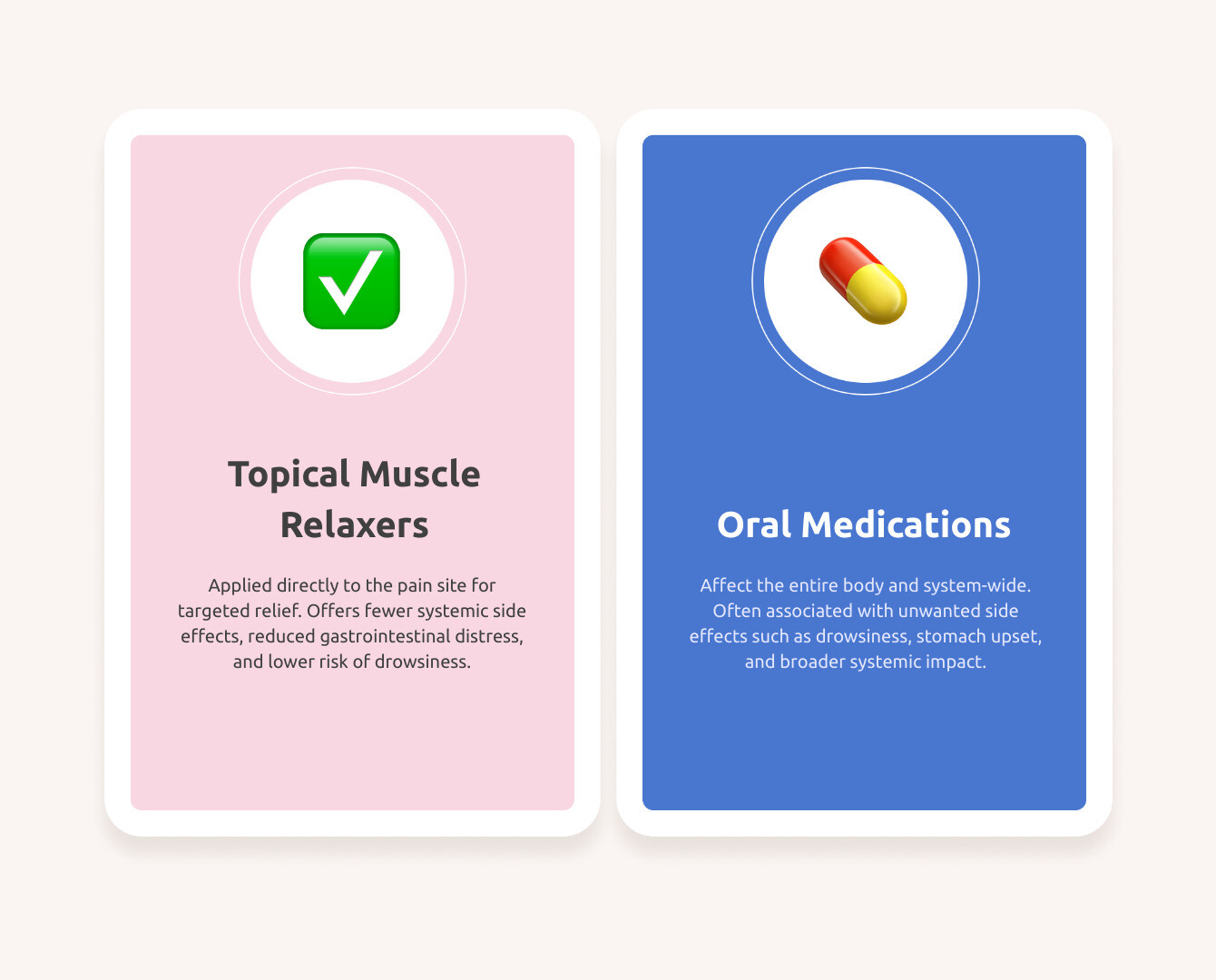
How Do Topical Muscle Relaxers Work?
Instead of swallowing a pill that affects your whole body, you can apply a muscle relaxer topical cream right where it hurts for localized relief. But how does it work?
When you apply a topical cream, the active ingredients penetrate your skin to reach the underlying muscles and tissues. This localized effect is more efficient than oral medications, which must travel through your entire system.
Once absorbed, these ingredients address pain in several ways. Some interrupt pain signals sent to the brain, while others reduce inflammation at the source, decreasing swelling and discomfort. Counterirritants create cooling or warming sensations to distract your brain from the pain.
Some specialized formulations can even help with muscle spasms directly. While most over-the-counter options focus on pain and inflammation, certain compounded creams contain ingredients that relax tight muscles without the drowsiness of oral muscle relaxers.
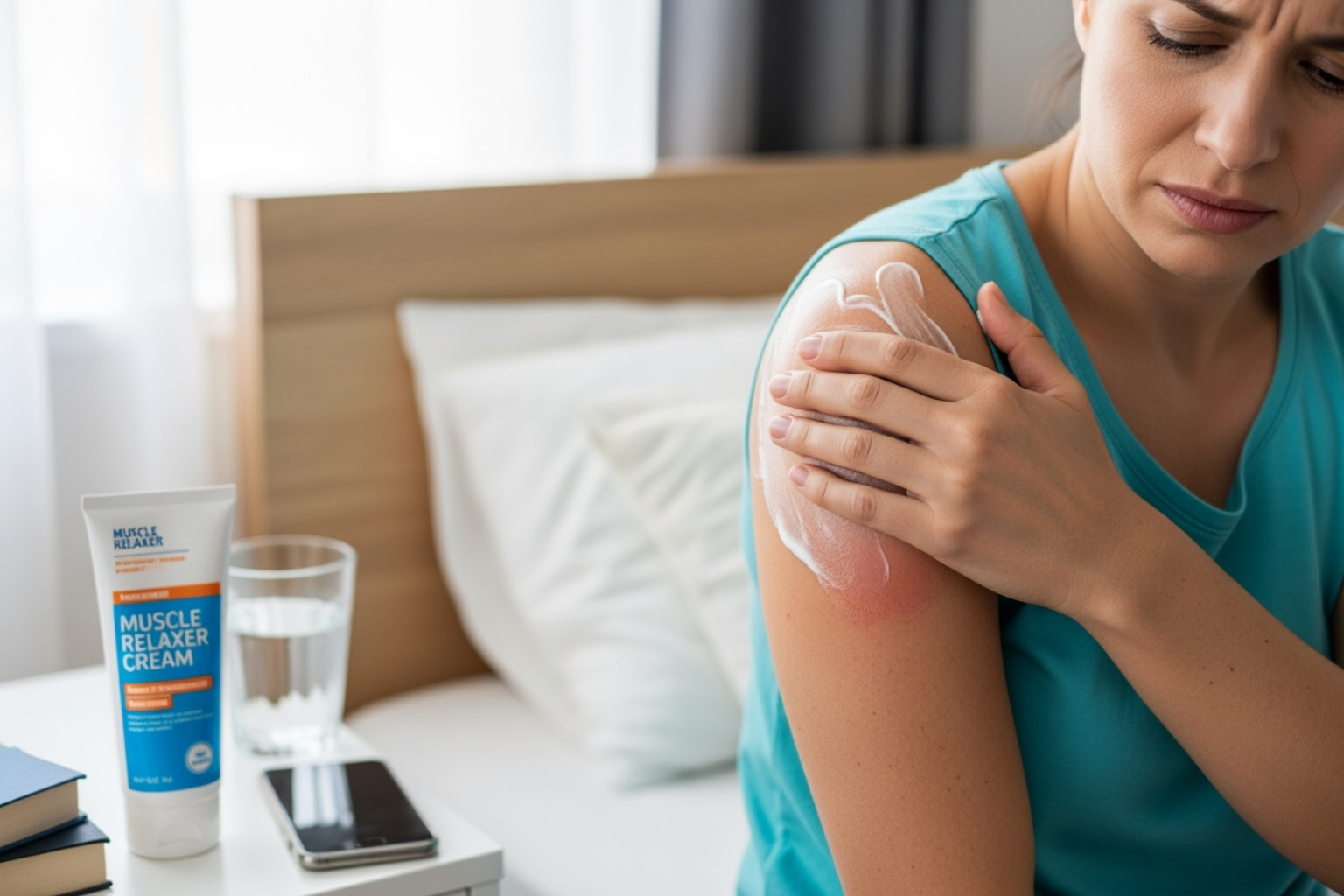
The Difference Between Pain Relief and Muscle Relaxation
Not all topical creams are the same. Most over-the-counter products are pain relief creams, not true muscle relaxers. Understanding the difference helps you choose the right product.
Pain relief creams use numbing agents like lidocaine to block nerve signals or cooling/warming ingredients like menthol and capsaicin to create distracting sensations that override pain signals.
True muscle relaxers are typically prescription drugs that work on the central nervous system to reduce spasticity. However, an exciting development is compounded creams that deliver muscle-relaxing ingredients like baclofen or cyclobenzaprine through the skin. These offer muscle-relaxing benefits without the systemic side effects, like drowsiness, common with oral versions.
Why Choose a Topical Approach?
The main advantage of topical treatments is their precision. Applying a muscle relaxer topical delivers medicine exactly where it's needed, leading to faster relief with less medication.
A key benefit is avoiding the systemic side effects of oral medications. This means less concern about drowsiness, mental fog, or reduced gastrointestinal distress.
The lower risk of drowsiness makes topicals ideal for anyone needing to stay alert, including athletes, parents, and professionals.
Finally, topicals are a less invasive approach to pain management than injections or other medical procedures. They are simple, safe, and easy to add to your daily routine. For more details on how gel formulations work, see our guide on gel muscle pain relief.
Decoding the Label: Common Ingredients in Muscle Relaxer Creams
Understanding what's inside your muscle relaxer topical is the key to choosing the right one. Active ingredients do the heavy lifting, while inactive ingredients affect how the product feels and absorbs.
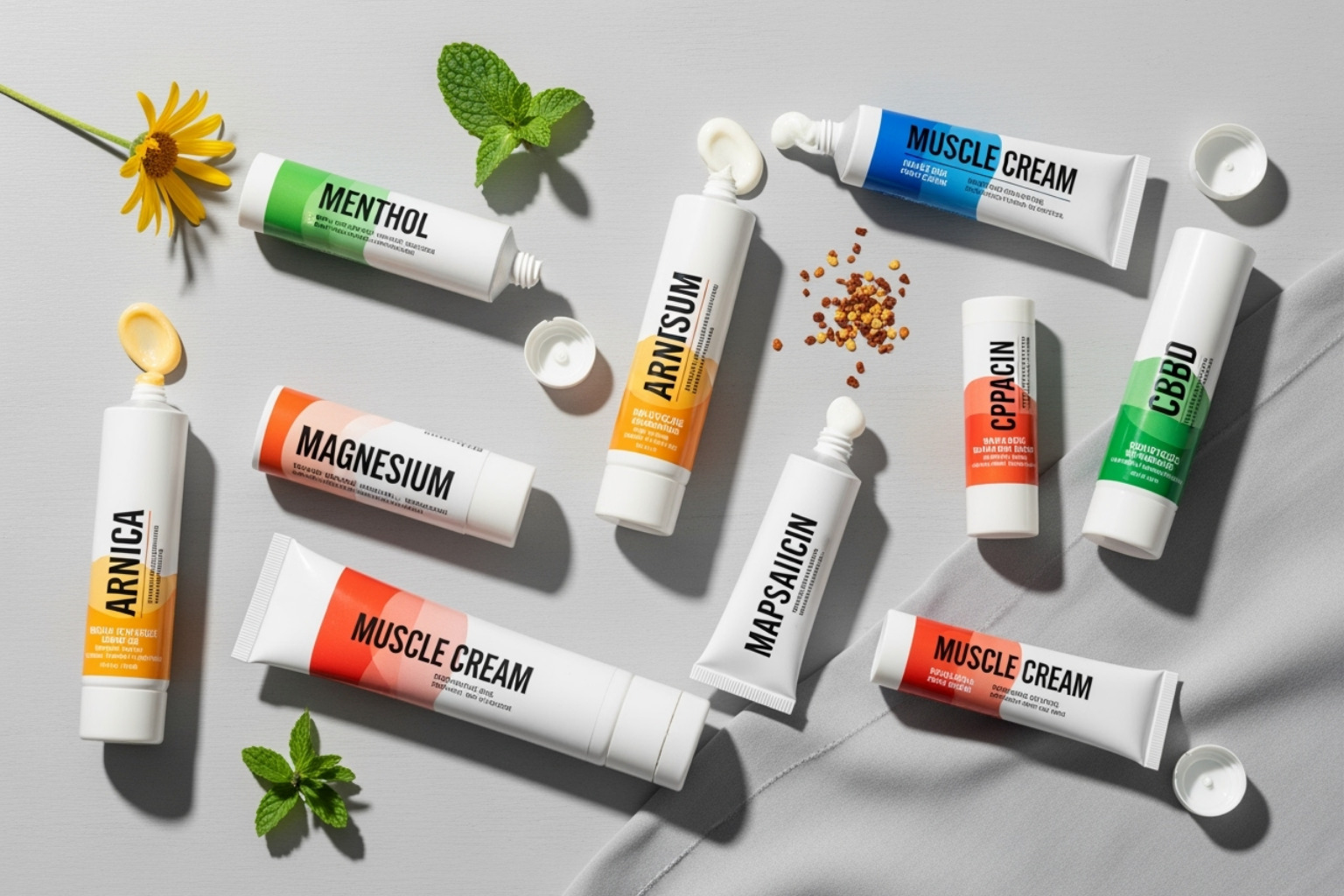
Counterirritants: The Hot & Cold Method
These ingredients create a sensation, like hot or cold, to distract your brain from pain. This is based on the "gate control theory," where the new sensation "closes the gate" on pain signals.
- Menthol: Creates a cooling tingle that stimulates cold receptors, telling your brain to focus on the cool feeling instead of the pain. Dr. Ochiai explains that menthol "slows blood flow and cools your skin, the latter of which can potentially distract from pain."
- Camphor: Often paired with menthol, it provides similar cooling relief and mild pain-relieving properties.
- Methyl Salicylate: Related to aspirin, this ingredient creates a warming sensation and offers anti-inflammatory benefits.
- Capsaicin: Derived from chili peppers, it interferes with pain signals by reducing substance P, a chemical that sends pain messages to the brain. It can cause a burning sensation initially and may take up to two months for full effect. Learn more from this scientific research on capsaicin for pain relief.
Local Anesthetics: Numbing the Nerves
Local anesthetics numb the area by blocking nerve signals, offering a way to silence pain directly.
- Lidocaine: The most common anesthetic, available up to 4% strength over-the-counter. It temporarily blocks sodium channels in nerve cells, effectively muting pain signals. Dr. Ochiai notes, "Lidocaine 4%... acts as an anesthetic, helping to numb the area and reduce pain." It's effective for nerve pain, carpal tunnel, back pain, and arthritis.
- Benzocaine: Works similarly to lidocaine, providing a numbing effect for quick relief from sharp pains.
Natural and Botanical Ingredients
Plant-based ingredients offer a gentle yet effective approach to pain relief.
- Arnica: A natural anti-inflammatory powerhouse used for muscle aches and arthritis. Research suggests it can be as effective as ibuprofen for pain relief. Dr. Ochiai supports its use for soreness and swelling. See the evidence for Arnica's effectiveness.
- Magnesium: Applied topically, it can help with muscle cramps and tension, as it's essential for proper muscle function.
- Aloe Vera: Soothes and moisturizes skin, and can help other ingredients absorb more effectively.
- Essential Oils: Peppermint, eucalyptus, and lavender can reduce muscle tension and inflammation.
- Willow Bark: Contains salicin, a chemical similar to aspirin, offering natural pain and inflammation relief.
For more natural strategies, see our guide on what helps sore muscles.
Anti-Inflammatories (Topical NSAIDs)
When inflammation is the primary pain driver, topical NSAIDs (Nonsteroidal Anti-Inflammatory Drugs) are a great choice. They deliver anti-inflammatory power directly to the painful area.
Diclofenac and ketoprofen are common examples. They absorb through the skin to reduce inflammation at the source. Dr. Ochiai explains they are "helpful for localized arthritis and muscle strains... because they decrease inflammation through COX-2 inhibition." Unlike oral NSAIDs, topical versions have a lower risk of systemic side effects like stomach upset. They are ideal for localized arthritis, tendonitis, or muscle strains. Learn more about what are NSAIDs?.
Your Guide to Using a Muscle Relaxer Topical Effectively and Safely
Following a few smart strategies can help you get the best results from your muscle relaxer topical.
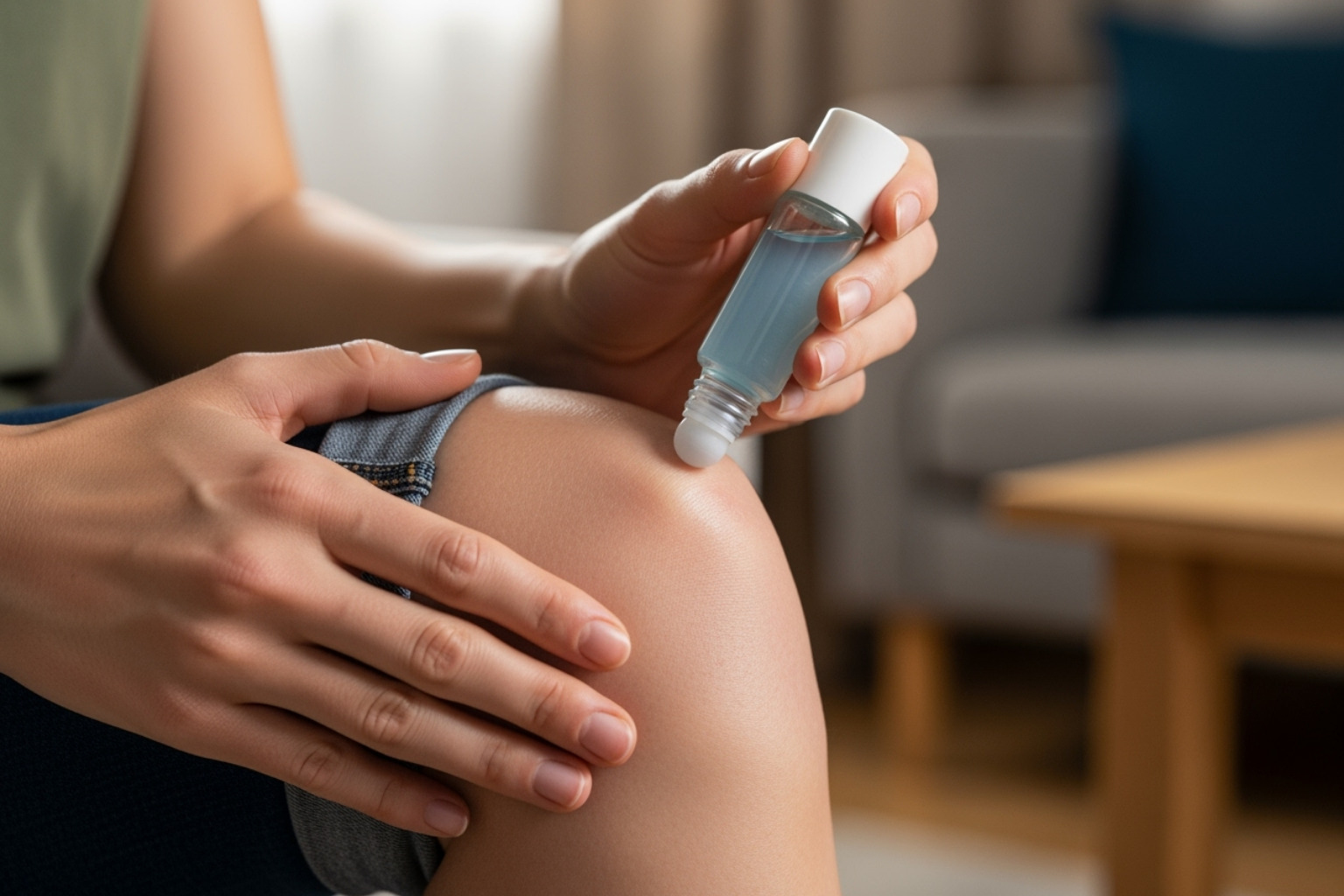
How to Apply for Maximum Effectiveness
- Start with clean, dry skin. This ensures the active ingredients can penetrate properly without being blocked by oils or dirt.
- Apply a thin layer. More product doesn't mean better results and may increase the risk of irritation. Just enough to cover the sore area is sufficient.
- Use gentle massage. Work the cream into your skin with circular motions until absorbed. The massage itself helps increase blood flow and provides additional relief.
- Be consistent. Most products work best when used 3-4 times throughout the day. Consistent application provides sustained relief.
- Wash your hands. After applying, wash your hands thoroughly to avoid accidentally getting active ingredients like menthol or capsaicin in your eyes.
- Don't cover the area. Avoid using bandages or heat pads immediately after application, as this can increase absorption and cause irritation.
Potential Side Effects and Precautions
While generally safe, topical treatments can have side effects. Most are minor and manageable.
- Skin Irritation: The most common reaction is mild warmth, stinging, redness, or itching. This is often expected with counterirritants like capsaicin.
- Allergic Reactions: Though rare, if you notice a rash, hives, or severe swelling, stop using the product and consult your doctor.
- Patch Testing: If you have sensitive skin, apply a small amount to your forearm and wait 24 hours to check for a reaction.
- Important Don'ts: Never apply to broken skin, open wounds, or rashes. Keep creams away from sensitive areas like your eyes and mouth.
- Pregnancy and Nursing: Always check with your healthcare provider before using any new treatment during these times.
- When to See a Doctor: Consult a doctor if pain worsens, lasts more than a week, or if you experience severe burning or suspect an allergic reaction.
Combining with Other Pain Relief Methods
A muscle relaxer topical works well as part of a broader pain management plan.
- Physical Therapy and Stretching: Creams can reduce pain and stiffness, making it easier to perform therapeutic exercises that address the root cause of your discomfort.
- Ice Packs: These pair well with cooling creams for acute injuries, but be mindful of the combined sensation.
- Heat Pads: Use extreme caution. Heat can intensify ingredients like capsaicin, potentially causing burns. Apply heat first, let the skin cool, and then apply the cream.
- Reducing Oral Medications: Effective topical relief can help many people reduce their intake of oral pain pills, minimizing systemic side effects like drowsiness and stomach upset.
For more tips on using physical activity for pain relief, see our guide on the best ways to relieve muscle aches with physical activity.
Choosing the Right Cream for Your Aches and Pains
Finding the perfect muscle relaxer topical means matching the right ingredients to your specific pain. While the delivery method—roll-ons, gels, creams, or sprays—is a matter of personal preference, the active ingredients are what truly count.
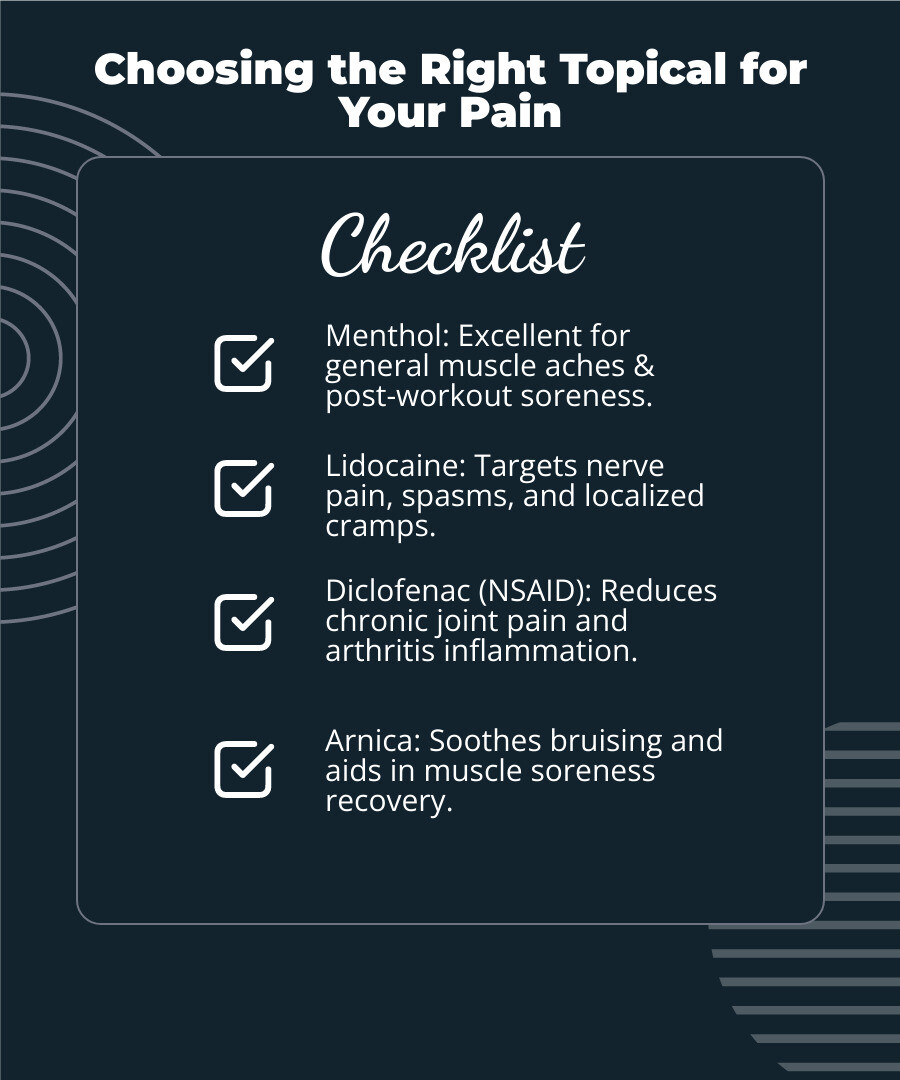
For General Muscle Aches & Post-Workout Soreness
For the dull, widespread discomfort from exercise or physical activity, look for ingredients that cool and promote recovery.
- Menthol-based cooling gels provide a refreshing sensation that distracts from the ache and helps reduce swelling.
- Magnesium creams can ease post-exercise cramps and soreness by supplying a mineral crucial for muscle function directly to the area.
- Arnica-infused products offer natural anti-inflammatory power to soothe exercise-related soreness.
For more recovery strategies, see our guide on how to reduce muscle soreness after a workout.
For Chronic Joint Pain and Arthritis
Persistent joint pain and arthritis require ingredients that fight inflammation and provide sustained relief.
- Capsaicin creams are highly effective for chronic conditions. They work by depleting the body's pain messenger, substance P, interrupting the pain signal itself.
- Topical diclofenac (an NSAID) delivers pharmaceutical-grade inflammation-fighting power directly to the joint, avoiding the systemic side effects of oral NSAIDs.
- Arnica is also excellent for arthritis, with research suggesting it can be as effective as ibuprofen for joint pain.
Dive deeper into solutions in our guide to the ins and outs of pain relief creams.
For Nerve Pain, Spasms, and Cramps
Sharp, shooting, or burning nerve pain requires ingredients that specifically target nerve signals and muscle spasms.
- Lidocaine (up to 4% OTC) acts as a temporary "off switch" for pain signals, providing numbing relief for conditions like carpal tunnel and diabetic neuropathy.
- Compounded formulas with gabapentin and baclofen are a cutting-edge prescription option. Gabapentin calms overactive nerves, and baclofen relaxes muscle contractions, offering targeted relief with minimal systemic effects.
This is where Neuropasil excels. Formulated for nerve pain and muscle discomfort, it combines natural ingredients like aloe, urea, and menthol for soothing relief from neuropathy, sciatica, fibromyalgia, and plantar fasciitis. Athletes use it for recovery, while others rely on it for chronic conditions. A targeted muscle relaxer topical can make all the difference. Learn more about how Neuropasil helps athletes with recovery pain.
Frequently Asked Questions about Topical Muscle Relaxers
Here are answers to some of the most common questions about muscle relaxer topical products.
How long does it take for a topical muscle relaxer to work?
The time it takes to feel relief depends on the active ingredients.
- Menthol and camphor work almost instantly, creating a cooling sensation that distracts from pain.
- Lidocaine typically provides numbing relief within 15 to 30 minutes.
- Topical NSAIDs like diclofenac may offer some relief in hours, but their full inflammation-fighting effect is seen after several days of consistent use.
- Capsaicin provides immediate warming, but its true pain-relieving benefit, which comes from depleting substance P, can take two weeks to two months to develop.
Duration of relief also varies. Always follow the product's directions for application frequency.
Can you use too much muscle relaxer cream?
Yes, more is not better. Using too much can lead to skin irritation like burning, stinging, or redness. While systemic absorption is low, applying excessive amounts, especially over large or broken skin areas, can increase the amount of drug entering your bloodstream. This is a particular concern with ingredients like lidocaine. A thin, even layer is all you need. If you're not getting enough relief, talk to your healthcare provider rather than just applying more.
Are topical muscle relaxers better than a hot bath for sore muscles?
They aren't in competition; they are complementary therapies that work differently.
A muscle relaxer topical provides targeted chemical action, delivering ingredients directly to the source of pain to block signals or reduce inflammation.
A hot bath offers widespread heat therapy, increasing blood flow to help muscles recover and promoting overall relaxation.
Which is better depends on your needs. For a specific strain, a topical cream offers focused relief. For general achiness, a hot bath can be soothing. Many people find that using both—a warm bath followed by a topical application—is the most effective strategy.
Conclusion
Understanding muscle relaxer topical products empowers you to manage your pain effectively. By learning how they work, what ingredients to look for, and how to apply them, you can make informed choices for your health.
The primary benefit of topical muscle relaxers is their targeted approach. You get relief precisely where you need it, resulting in fewer systemic side effects, less drowsiness, and minimal gastrointestinal distress. This allows you to stay comfortable and alert.
Whether you need cooling menthol for post-workout soreness, numbing lidocaine for nerve pain, or anti-inflammatory arnica for joint discomfort, there is a topical solution for you.
At Neuropasil, we believe pain shouldn't control your life. Our formula combines the soothing properties of Aloe Vera with the cooling relief of Menthol to deliver fast-acting comfort for muscle and nerve pain. Customers use Neuropasil for relief from neuropathy, sciatica, fibromyalgia, and plantar fasciitis, as well as for athletic recovery and everyday aches.
The power to choose targeted, effective pain relief is in your hands. You deserve to live comfortably and without the burden of persistent pain. Take the first step by finding the right solution for your needs.
Ready to find your perfect match? Explore our guide to find the best products for your muscle pain and begin your journey toward targeted comfort.














